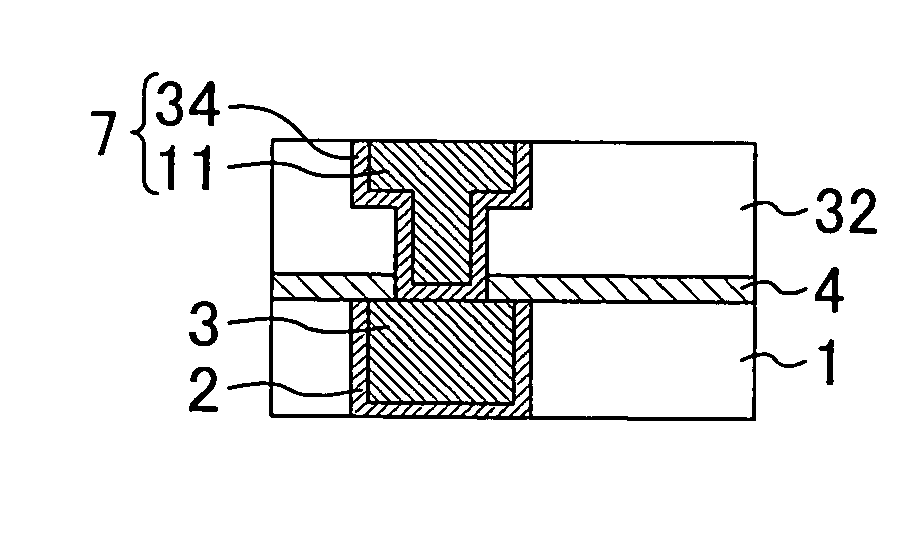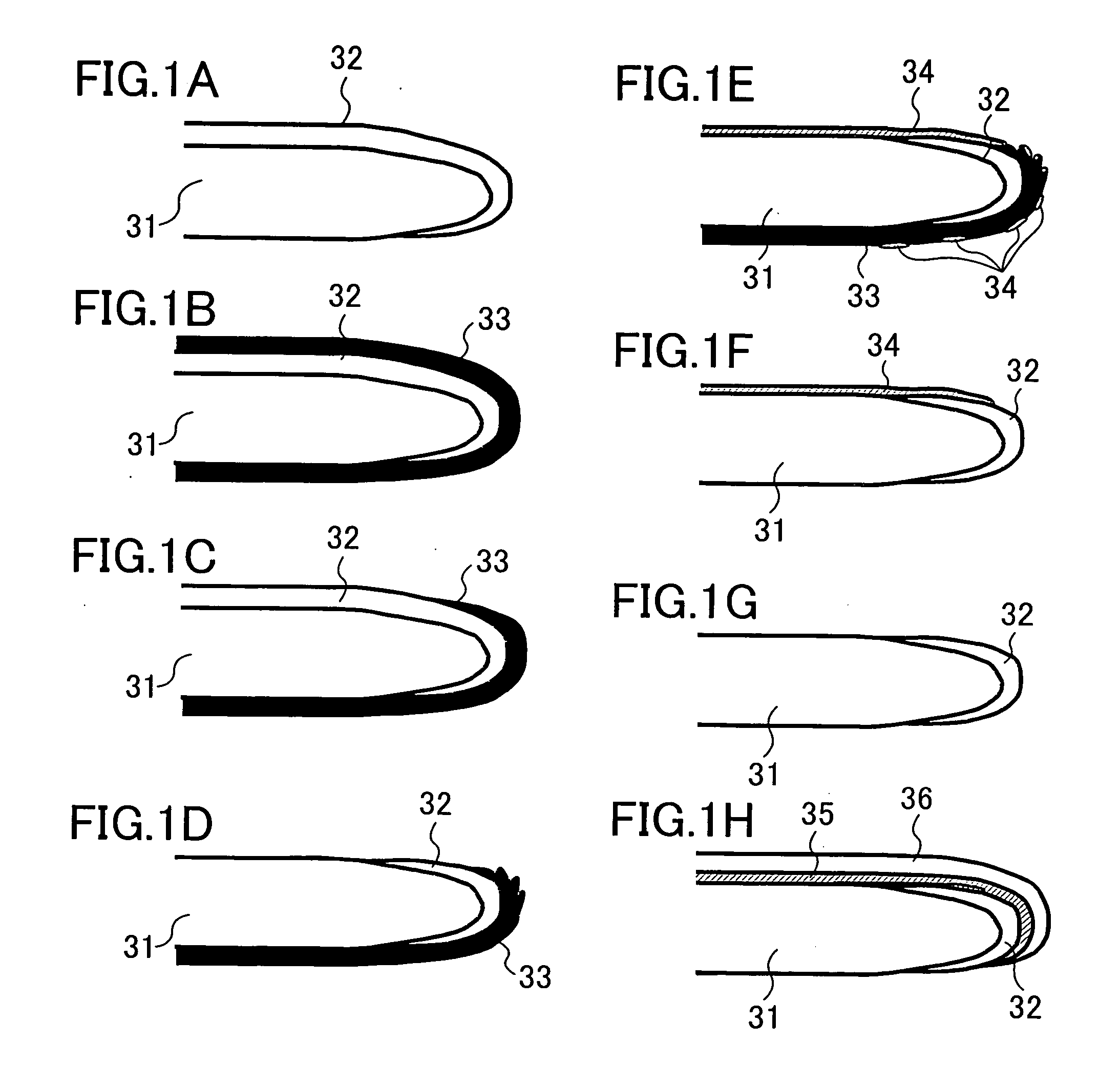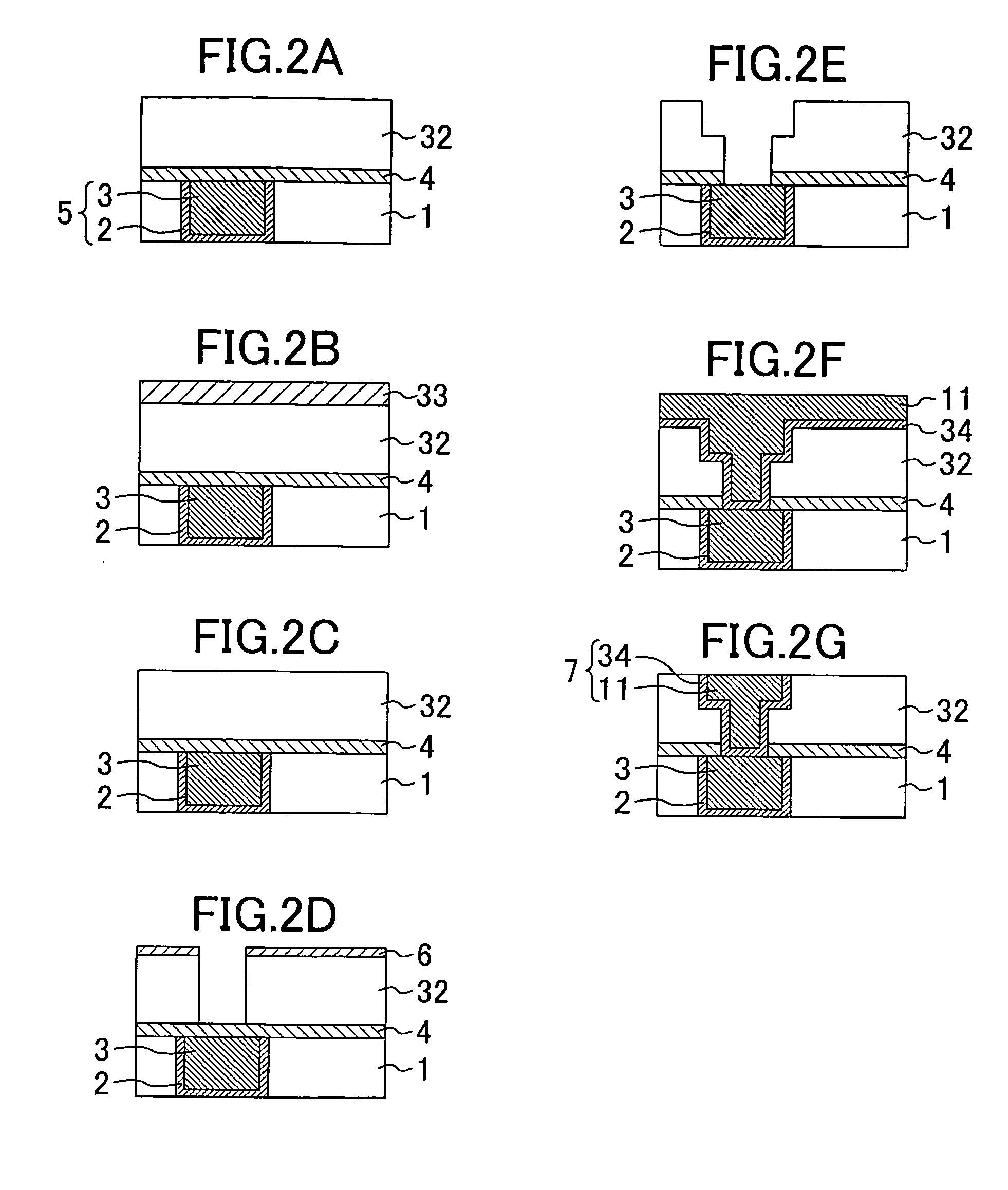Method for fabricating semiconductor device
a semiconductor and device technology, applied in semiconductor/solid-state device manufacturing, basic electric elements, electric devices, etc., can solve the problems of obstructing affecting the yield of the device, and affecting the development of multi-layer interconnection, so as to facilitate the the effect of unacceptable delamination from the edg
- Summary
- Abstract
- Description
- Claims
- Application Information
AI Technical Summary
Benefits of technology
Problems solved by technology
Method used
Image
Examples
first embodiment
[0029] A method for fabricating a semiconductor device according to a first embodiment of the present invention will be described below with reference to the accompanying drawings.
[0030]FIGS. 1A to 1H are sectional views of a wafer edge for explaining the method for fabricating a semiconductor device according to the first embodiment. FIGS. 2A to 2G are sectional views of a chip formation region of the wafer for explaining the method for fabricating a semiconductor device according to the first embodiment.
[0031] Referring to FIG. 1A, first, an organic-based low-dielectric-constant interlayer film (referred hereinafter to as an organic-based low-k interlayer film) 32 made of SiOC or the like is formed over the top surface of a wafer-shaped semiconductor substrate 31. During this formation, the organic-based low-k interlayer film 32 is formed also on the edge of the semiconductor substrate 31 including the bevel. As shown in FIG. 2A, in a chip formation region on the principal surfa...
second embodiment
[0043] A method for fabricating a semiconductor device according to a second embodiment of the present invention will be described below with reference to the accompanying drawings. The method of the second embodiment simplifies fabrication steps as compared to that of the first embodiment by modifying the step of depositing a protective film and the step of removing a portion of the protective film on a device surface.
[0044]FIGS. 3A to 3H are sectional views for explaining the method for fabricating a semiconductor device according to the second embodiment. These figures illustrate an edge of a wafer-shaped semiconductor substrate.
[0045] As shown in FIG. 3A, first, in the edge of a wafer-shaped semiconductor substrate 41, an organic-based low-k interlayer film 42 is formed on the semiconductor substrate 41. Unlike the first embodiment, the organic-based low-k interlayer film 42 is not polished in this step.
[0046] Next, as shown in FIG. 3B, using a thermal CVD method, a protectiv...
PUM
 Login to View More
Login to View More Abstract
Description
Claims
Application Information
 Login to View More
Login to View More - R&D
- Intellectual Property
- Life Sciences
- Materials
- Tech Scout
- Unparalleled Data Quality
- Higher Quality Content
- 60% Fewer Hallucinations
Browse by: Latest US Patents, China's latest patents, Technical Efficacy Thesaurus, Application Domain, Technology Topic, Popular Technical Reports.
© 2025 PatSnap. All rights reserved.Legal|Privacy policy|Modern Slavery Act Transparency Statement|Sitemap|About US| Contact US: help@patsnap.com



